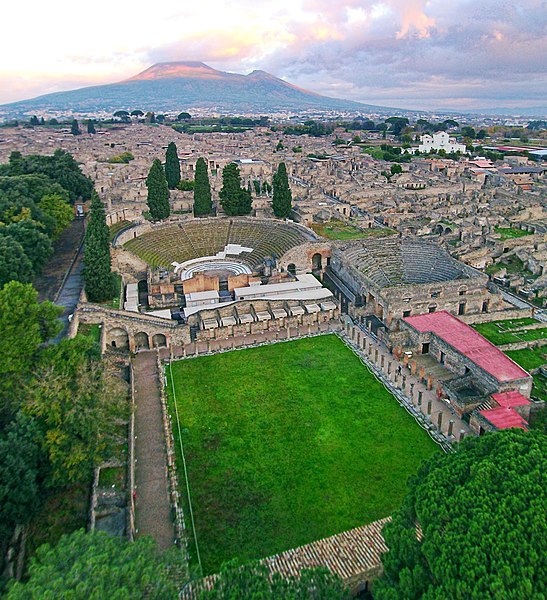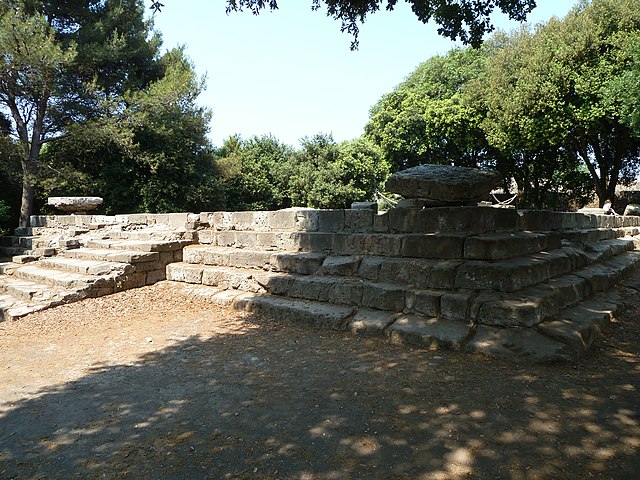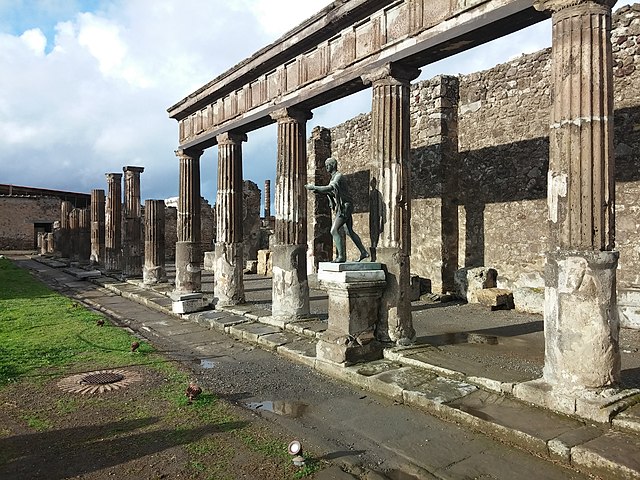The House of the Faun, constructed in the 2nd century BC during the Samnite period, was a grand Hellenistic palace that was framed by peristyle in Pompeii, Italy. The historical significance in this impressive estate is found in the many great pieces of art that were well preserved from the ash of the eruption of Mount Vesuvius in 79 AD. It is one of the most luxurious aristocratic houses from the Roman Republic, and reflects this period better than most archaeological evidence found even in Rome itself.
Front view of the house
Copy of the Dancing Faun
The Alexander Mosaic, showing Alexander at left. A copy is displayed in the House of the Faun, where the original was found.
The Nilotic scene mosaic depicts exotic animals in the Nile.
Pompeii was an ancient city in what is now the comune of Pompei near Naples in the Campania region of Italy. Along with Herculaneum, Stabiae, and many surrounding villas, the city was buried under 4 to 6 m of volcanic ash and pumice in the eruption of Mount Vesuvius in 79 AD.
View of Pompeii and Mount Vesuvius
The Forum of Pompeii with the entrances to the Basilica (left) and Macellum (right), the Temple of Jupiter (front) and Mount Vesuvius in the distance.
Greek Doric Temple (6th century BC) in Triangular Forum
Etruscan Temple of Apollo








